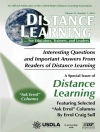In this brief edition of
Sociology: Exploring the Architecture of Everyday Life, David Newman shows students how to see the ‘unfamiliar in the familiar’—to step back and see predictability in their personal experiences. Through his approachable writing style and lively personal anecdotes, the author stays true to his goal of writing a textbook that ‘reads like a real book.’ Newman uses the metaphors of ‘architecture’ and ‘construction, ‘ to illustrate that society is a human creation that is planned, maintained, and altered by individuals. In the
Seventh Edition of this bestseller, students can use the most updated statistical information combined with contemporary examples to explore the individual and society, the construction of self and society, and social inequality in the context of social structures.
Included with this title:
The password-protected Instructor Resource Site (formally known as SAGE Edge) offers access to all text-specific resources, including a test bank and editable, chapter-specific Power Point® slides.
表中的内容
Preface
Acknowledgments
About the Author
PART I. THE INDIVIDUAL AND SOCIETY
Chapter 1. Taking a New Look at a Familiar World
Sociology and the Individual
The Insights of Sociology
The Sociological Imagination
Conclusion
Chapter Highlights
Key Terms
Chapter 2. Seeing and Thinking Sociologically
How Individuals Structure Society
Social Influence: The Impact of Other People in Our Everyday Lives
Societal Influence: The Effect of Social Structure on Our Everyday Lives
Three Perspectives on Social Order
Conclusion
Chapter Highlights
Key Terms
PART II. THE CONSTRUCTION OF SELF AND SOCIETY
Chapter 3. Building Reality: The Social Construction of Knowledge
Understanding the Social Construction of Reality
Laying the Foundation: The Bases of Reality
Building the Walls: Conflict, Power, and Social Institutions
Appreciating the Contributions of Sociological Research
The Trustworthiness of Social Research
Conclusion
Chapter Highlights
Key Terms
Chapter 4. Building Order: Culture and History
Dimensions of Culture
Cultural Expectations and Social Order
Cultural Variation and Everyday Experience
Conclusion
Chapter Highlights
Key Terms
Chapter 5. Building Identity: Socialization
Genes, Social Structure, and the Construction of Human Beings
Socialization: Becoming You
Growing Up With Inequality
Institutions and Socialization
Conclusion
Chapter Highlights
Key Terms
Chapter 6. Supporting Identity: The Presentation of Self
Forming Impressions of Others
Managing Impressions
Mismanaging Impressions: Spoiled Identities
Conclusion
Chapter Highlights
Key Terms
Chapter 7. Building Social Relationships: Intimacy and Families
Life With Others
Social Diversity and Intimate Choices
Family Life
Family and Social Structure
Family Challenges
Conclusion
Chapter Highlights
Key Terms
Chapter 8. Constructing Difference: Social Deviance
Defining Deviance
Explaining Deviant Behavior
Linking Power, Deviance, and Social Control
Conclusion
Chapter Highlights
Key Terms
PART III. SOCIAL STRUCTURE, INSTITUTIONS, AND EVERYDAY LIFE
Chapter 9. The Structure of Society: Organizations, Social Institutions, and Globalization
Social Structure and Everyday Life
Social Dilemmas: Individual Interests and Structural Needs
The Structure of Formal Organizations
Organizations and Institutions
Globalization and Social Institutions
Conclusion
Chapter Highlights
Key Terms
Chapter 10. The Architecture of Stratification: Social Class and Inequality
Stratification Systems
Sociological Perspectives on Stratification
Class Inequality in the United States
Global Development and Inequality
Conclusion
Chapter Highlights
Key Terms
Chapter 11. The Architecture of Inequality: Race and Ethnicity
Race and Ethnicity: More Than Just Biology
Histories of Oppression and Inequality
Racial and Ethnic Relations
Global Perspectives on Racism
Conclusion
Chapter Highlights
Key Terms
Chapter 12. The Architecture of Inequality: Sex and Gender
Sexism at the Personal Level
The Ideology of Sexism: Biology as Destiny
Institutions and Gender Inequality
The Global Devaluation of Women
Conclusion
Chapter Highlights
Key Terms
Chapter 13. Demographic Dynamics: Population Trends
The Influence of Birth Cohor
Demographic Dynamics
Population Trends in the United States
Conclusion
Chapter Highlights
Key Terms
Chapter 14. Architects of Change: Reconstructing Society
Social Change
Social Movements
The Sociological Imagination Revisited
Conclusion and Farewell
Chapter Highlights
Key Terms
Glossary
References
Index
关于作者
David M. Newman earned his BA from San Diego State University in 1981 and his graduate degrees from the University of Washington in Seattle (MA 1984, Ph D 1988). After a year at the University of Connecticut, David taught at De Pauw University for more than 30 years. He currently teaches at Colgate University. David teaches courses in contemporary society, deviance, mental illness, family, social inequality, and research methods. He has published numerous articles on teaching and has presented research papers on the intersection of gender and power in intimate relationships. Recently most of his scholarly activity has been devoted to writing and revising several books, including Sociology: Exploring the Architecture of Everyday Life: Brief Edition (SAGE, 2020); Identities and Inequalities: Exploring the Intersections of Race, Class, Gender, and Sexuality (Mc Graw-Hill, 2021); and Families: A Sociological Perspective (Mc Graw-Hill, 2009). His most recent book, A Culture of Second Chances: The Promise, Practice and Price of Starting Over in Everyday Life (Lexington Books, 2019), examines the cultural meaning, institutional importance, and social limitations of “second chance” and “permanent stigma” narratives in everyday life.












